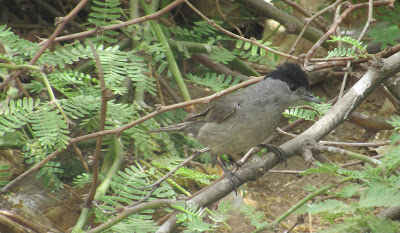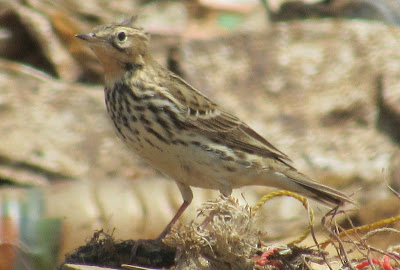In the meantime, here is one last blog to finally bring me up-to-date.
I went out to the waste water site two weeks ago. It was still surprisingly cool and it was Mid-May.
There were still some warblers about though the proportion with some sort of illness was higher than peak season. I will say more about that later.
blackcap 1
There were no such worries about the health of the blackcap seen. They can be healthy and late.
blackcap 2
I suspect the reason this European reed warbler was lingering was its lack of any tail feathers.
European reed warbler 1
It did have its white under-tail coverts though making very strange looking.
European reed warbler 2
Despite, its lose, it is always to good to see European reed warbler as clearly as I often do at the waste water site.
European reed warbler 3
willow warbler
However, you can probably just make out that the willow warbler has some sort of skin infection near the base of its bill.
spur-winged lapwing
As usual I spent some time at the main body of water. The spur-winged lapwing were even more aggressive than usual. With no birds of prey to mob, they turned their attention to me a few times.
kentish plover
There were no wood sandpiper present for the first time since last summer. Kentish plover was the most numerous wader.
common ringed plover (back)
There were a few common ringed plover present too.
tree pipit
Yellow wagtail were still around as well as one tree pipit.
golden oriole
Sudanese golden sparrow
It's been a long time since I haven't seen Sudanese golden sparrow at the site.
woodchat shrike
I have commented on this before but woodchat shrike have very long passage seasons here though they are not seen mid-winter.
spotted flycatcher
There was still the odd spotted flycatcher present.
Namaqua dove
I am now going out to the coast just as I post this.




















































